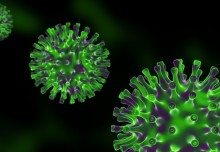

A Life Sciences BBSRC DTP student, Eleonora Moratto, has reached the final of the Dance Your PhD competition.
Dance Your PhD is an annual competition where scientists have the opportunity to express their research through dance. First held in 2008, the contest aims to educate by explaining complex theories through the medium of interpretive dance. It is sponsored by American Association for the Advancement of Science (AAAS), Science magazine, and Primer.ai, an artificial intelligence technology company. Participants need to produce a video of themselves dancing their own PhD, solo or as part of an ensemble. The winners are selected based on scientific merit, artistic merit, and the creative combination of science and art.
"Ballet is a beautiful way to tell stories through movement while science tells stories through investigative work and describes in papers how nature works. Why not use ballet to tell a story typically told by science?" Eleonora Moratto BBSRC PhD student, Life Sciences
Life Sciences BBSRC PhD student Eleonora Moratto, a professionally trained ballet dancer who performs at gigs in her spare time, has reached the 2023 final with her entry showcasing bioelectricity of plant pathogen interactions. Eleonora, known as the Biology Ballerina, is passionate about all forms of SciArt, as art can be an incredible way to break down the barriers between science and the public.
Eleonora said: ‘I am thrilled to be one of the finalists! When people ask me what there is in common between ballet and science I always answer: storytelling! Ballet is a beautiful way to tell stories, usually human stories, through movement while science tells stories through investigative work and describes in papers how nature works. Why not use ballet to tell a story typically told by science?’
 During Eleonora’s MRes she specialised in understanding how plants use their immune systems to fight disease, and when she moved onto her PhD she decided to focus on earlier steps of infection. She works on a devastating tropical pathogen called Phytophthora palmivora which causes fruit and plant rot in cocoa, durian, papaya and many others. Currently there are no methods available to prevent or treat this plant disease which results in total yield loss.
During Eleonora’s MRes she specialised in understanding how plants use their immune systems to fight disease, and when she moved onto her PhD she decided to focus on earlier steps of infection. She works on a devastating tropical pathogen called Phytophthora palmivora which causes fruit and plant rot in cocoa, durian, papaya and many others. Currently there are no methods available to prevent or treat this plant disease which results in total yield loss.
Phytophthora palmivora has swimming spores that respond to electric fields. Since plant roots produce endogenous electric fields it is thought that the spores might use it to locate the plant. Eleonora’s work tries to understand how the pathogen responds to electric fields, both plant generated and artificially imposed, and if it is possible to impose external electric fields to prevent plant infection, which is the phenomenon explained in the video entry. This could potentially evolve in a crop protection strategy.
Eleonora said: ‘I have always wanted to use dance to explain my scientific work so I jumped on the opportunity when I came across the Dance Your PhD competition. I have been practicing ballet since I was five years old and I am professionally trained in the Vaganova method. When I heard a piece of beautiful music by Peter Wilson with a silence in the middle I had the idea of cutting the choreography in two parts: the first showing how Phytophthora palmivora spores infect the plant in natural conditions and the second showing how an external electric field camouflages the plant’.
"I have always wanted to use dance to explain my scientific work so I jumped on the opportunity when I came across the Dance Your PhD competition". Eleonora Moratto BBSRC PhD student, Life Sciences
She decided to use lighting as a visual representation of the electric field and different dance styles for the spores and the plant. Each movement is reminiscent of the actual biological process that can be seen under the microscope. When the seed germinates at the beginning of the video the primary root emerges first (leg) followed by the embryonic leaves (hands and arms). Similarly the dancers interpreting the spores swim around in a chaotic pattern like the Phytophthora palmivora spores do. The ‘spore’ dancers also attach to the roots/legs of the plant dancer and grow within the plant tissue.
Eleonora added: ‘As a visual person I didn’t find it challenging to translate the microscope images and videos into dance. I have to thank the dancers from Chelsea Ballet who volunteered to help with the project, as well as my supervisors Dr Giovanni Sena and Dr Tolga Bozkurt of their support. Finally I’d like to thank BBSRC and Professor Bernadette Byrne for making this possible’.
You can watch Eleonora's competition entry here.
Article text (excluding photos or graphics) © Imperial College London.
Photos and graphics subject to third party copyright used with permission or © Imperial College London.
Reporter
Emily Govan
Department of Life Sciences



